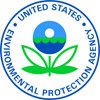LENEXA, KAN. (JUNE 28, 2024) – Today, at City Hall in Waterloo, Iowa, EPA Region 7 Brownfields and Land Revitalization Branch Supervisor Stanley Walker presented a $1 million ceremonial check to the City of Waterloo as a Brownfields Multipurpose Grant selectee.
EPA has selected the city to receive the grant through EPA’s Brownfields Multipurpose, Assessment, and Cleanup (MAC) Grants program, funded by the Bipartisan Infrastructure Law. MAC Grant funds help transform once-polluted, vacant, and abandoned properties into community assets, while helping to create good jobs and spur economic revitalization in overburdened communities.
The multipurpose grant funds will be used to conduct 10 Phase I and 10 Phase II environmental site assessments and community engagement activities. This funding will also be used to clean up the 1.8-acre Altstadt and Langlas Site, located at 54 Lane Street. Additional priority sites include the Former Rath Plant at 1508 Sycamore Street; a former food warehouse at 70-80 Sycamore Street; TechWorks out-lot near 360 Westfield Avenue; and Grand Crossing 3 lot near 50 West Mullan Avenue.
"EPA Region 7 is proud to deliver these Brownfields funding resources to the City of Waterloo," said Walker. "The Brownfields program is truly a win-win for everyone involved, and we are proud of our communities’ efforts to provide a cleaner and healthier environment for all, while at the same time spurring local economic development."
"We are so thankful to the Biden-Harris Administration and the EPA for their continuing support of revitalizing often neglected areas,” said Waterloo Mayor Quentin Hart. “This investment will help create the kind of change that will have generational impacts in our community."
This funding follows Waterloo's selection as a Brownfields Cleanup Grant selectee last year. In June 2023, McCollister stopped on the Brownfields Investing in America tour to present a $642,000 ceremonial check to Mayor Hart.
Background
EPA’s Brownfields program began in 1995 and has provided nearly $2.7 billion in Brownfields Grants to assess and clean up contaminated properties and return blighted properties to productive reuse. Prior to the Bipartisan Infrastructure Law, this program made approximately $60 million available each year. Thanks to the President’s historic investments in America through this law, EPA has increased that yearly investment by nearly 400%.
More than half of the funding available for this grant cycle (approximately $160 million) comes from the historic $1.5 billion investment from President Biden’s Bipartisan Infrastructure Law. This investment has also allowed the MAC grants’ maximum award amounts to increase significantly from $500,000 to a new maximum of $5 million per award.
EPA’s Brownfields program advances President Biden’s Justice40 Initiative, which set a goal that 40% of the overall benefits of certain federal investments flow to disadvantaged communities that are marginalized by underinvestment and overburdened by pollution. The Brownfields program strives to meet this commitment and advance environmental justice and equity considerations in all aspects of its work. Approximately 86% of the MAC and RLF Supplemental program applications selected to receive funding proposed to work in areas that include disadvantaged communities.
Learn more about EPA’s Brownfields program.
# # #
Learn more about EPA Region 7
from EPA News Releases https://ift.tt/OKnhyNW

